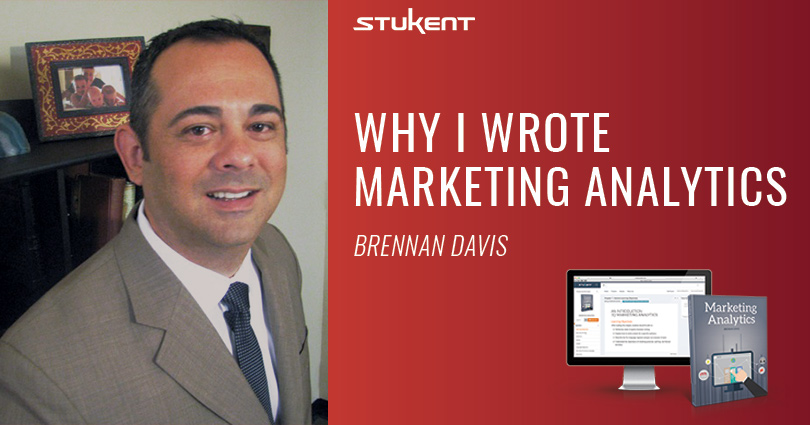Writing a textbook is not an easy undertaking. When I decided to write my textbook, Marketing Analytics, there were plenty of people who told me that writing a textbook would be a waste of time. So, why did I write it?
I knew it would be a challenge, but I wanted a textbook my students could leverage for jobs. All of the other textbooks felt like repackaged marketing research books. I knew that the digital revolution was creating something EXCITING for marketing analytics that was different than traditional topics like scanner data, survey data, lab experiments and factor analysis.
As an instructor, I gathered around me some advisors from industry. They talked about topics like attribution, optimization, marketing mix models, artificial intelligence, social listening and data technologies. I brought those topics into the classroom and the students loved it!
Eventually, I decided to write it all up to share with other universities. I created the “Marketing Analytics” textbook, lecture slides, lesson plans, exercises and test bank. I knew Stukent would get it because the company’s Digital Marketing Essentials book also takes a hands-on approach to learning new marketing subjects.
I’ve included the table of contents for “Marketing Analytics” so you can see the covered topics for yourself.
Table of Contents
Part 1: Introduction
Chapter 1: An Overview of Marketing Analytics
Chapter 2: A Primer on R
Part 2: Data
Chapter 3: Data Technologies
Chapter 4: Accessing Marketing Data using Structured Query Language
Chapter 5: Data Management Platforms
Chapter 6: Extracting Meaning from Data on the Web
Part 3: Analysis Tools
Chapter 7: Analytics of Segmentation, Targeting and Positioning
Chapter 8: AB Testing
Chapter 9: Experimental Design in the Digital Age
Chapter 10: Artificial Intelligence for Marketing Analytics
Part 4: Communication
Chapter 11: Data Visualization
Chapter 12: Benchmarking with Marketing Analytics Metrics
Part 5: Statistical Approaches to Analyzing Data
Chapter 13: Statistical Analyses of AB Tests and Experiments
Chapter 14: Marketing Mix Models
Chapter 15: Moderation in Marketing Mix Models
Conclusion
There isn’t another book like this out there that gives students this type of perspective and training. Trust me, if there were, I wouldn’t have written my book. I did because we as educators have a responsibility to provide our students with the skills they need to work in the industry today, and that’s what “Marketing Analytics” does. I hope that many professors enjoy using it, and that many other professors will take steps to advance education in their own fields.
About Me
 I am an associate professor of marketing at the Orfalea College of Business, California Polytechnic State University. I have been developing marketing curriculum for over a decade. I love to connect large datasets to answer questions in the domain of transformative consumer research. I also have about eight years of professional experience in marketing management in the automotive and technology industries.
I am an associate professor of marketing at the Orfalea College of Business, California Polytechnic State University. I have been developing marketing curriculum for over a decade. I love to connect large datasets to answer questions in the domain of transformative consumer research. I also have about eight years of professional experience in marketing management in the automotive and technology industries.
I spent years developing the marketing analytics course with a committee of executives from top local marketing agencies and from top businesses in the Silicon Valley. The course covers data approaches useful to marketing analytics professionals, advanced analysis that firms most desire when hiring students and visualization techniques helpful in communicating as a marketing liaison between technology experts and company managers.
My Education
- PhD, The Paul Merage School of Business, University of California Irvine
- MBA, The Wharton School of Business, University of Pennsylvania
- BS, University of California Los Angeles
My Experience
- Associate Professor, California Polytechnic State University (Cal Poly)
- Assistant Professor, Baylor University
- Assistant Professor, Azusa Pacific University
- Marketing Manager, Project InVision
- Marketing Analytics Consultant, Nissan Motor Corporation, National Headquarters








